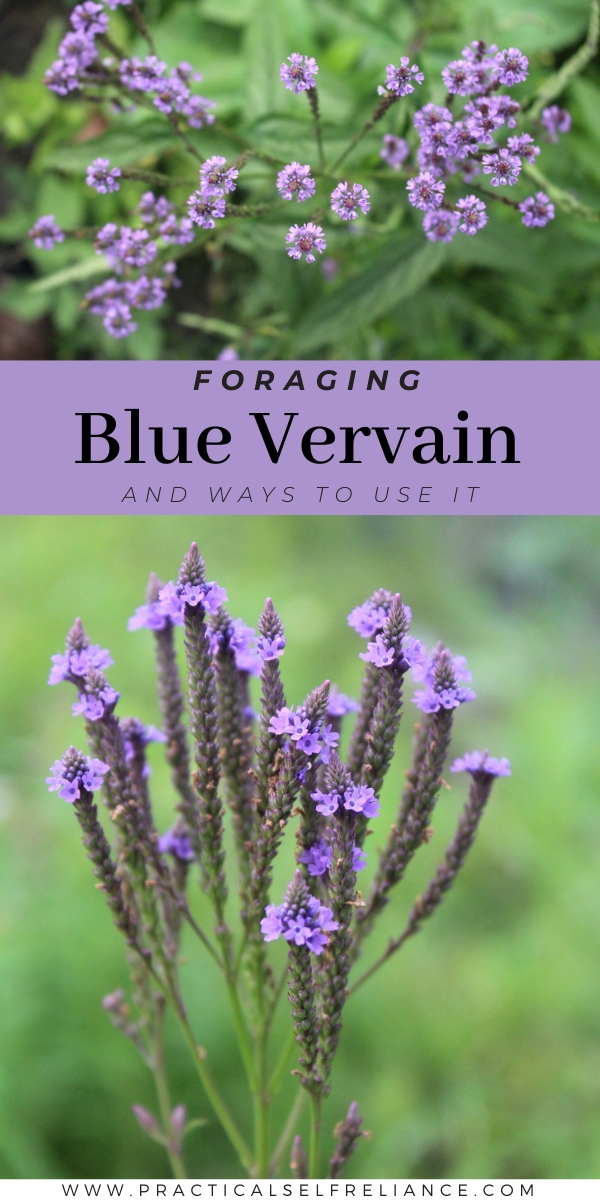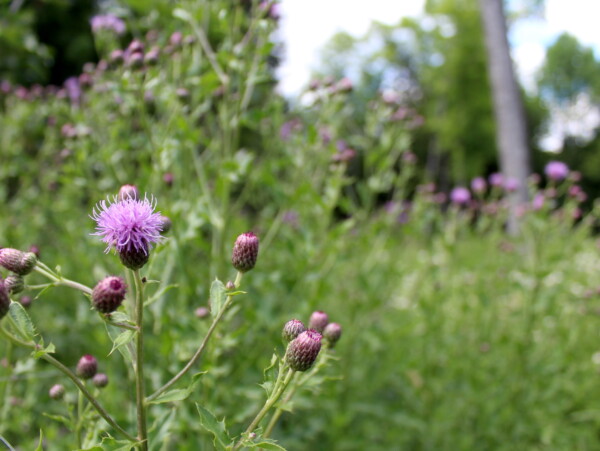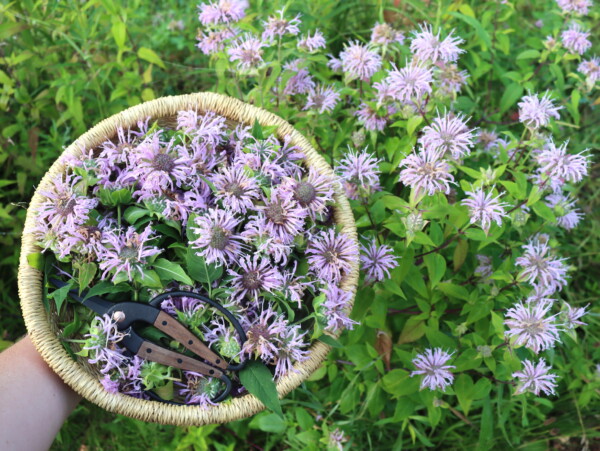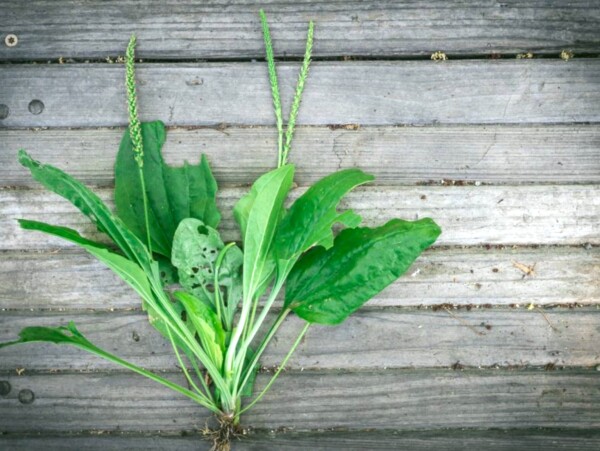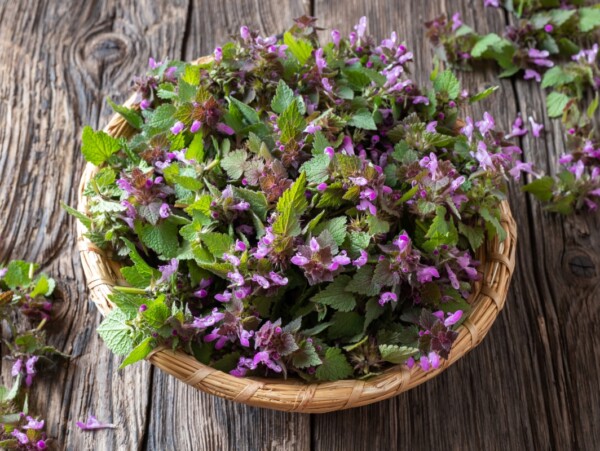Affiliate disclosure: This post may contain affiliate links. Please see our Privacy Policy.
Blue vervain is both edible and medicinal, and it’s highly prized by herbalists, which use it to treat anxiety, insomnia, and depression, as well as balance hormones and reduce inflammation.
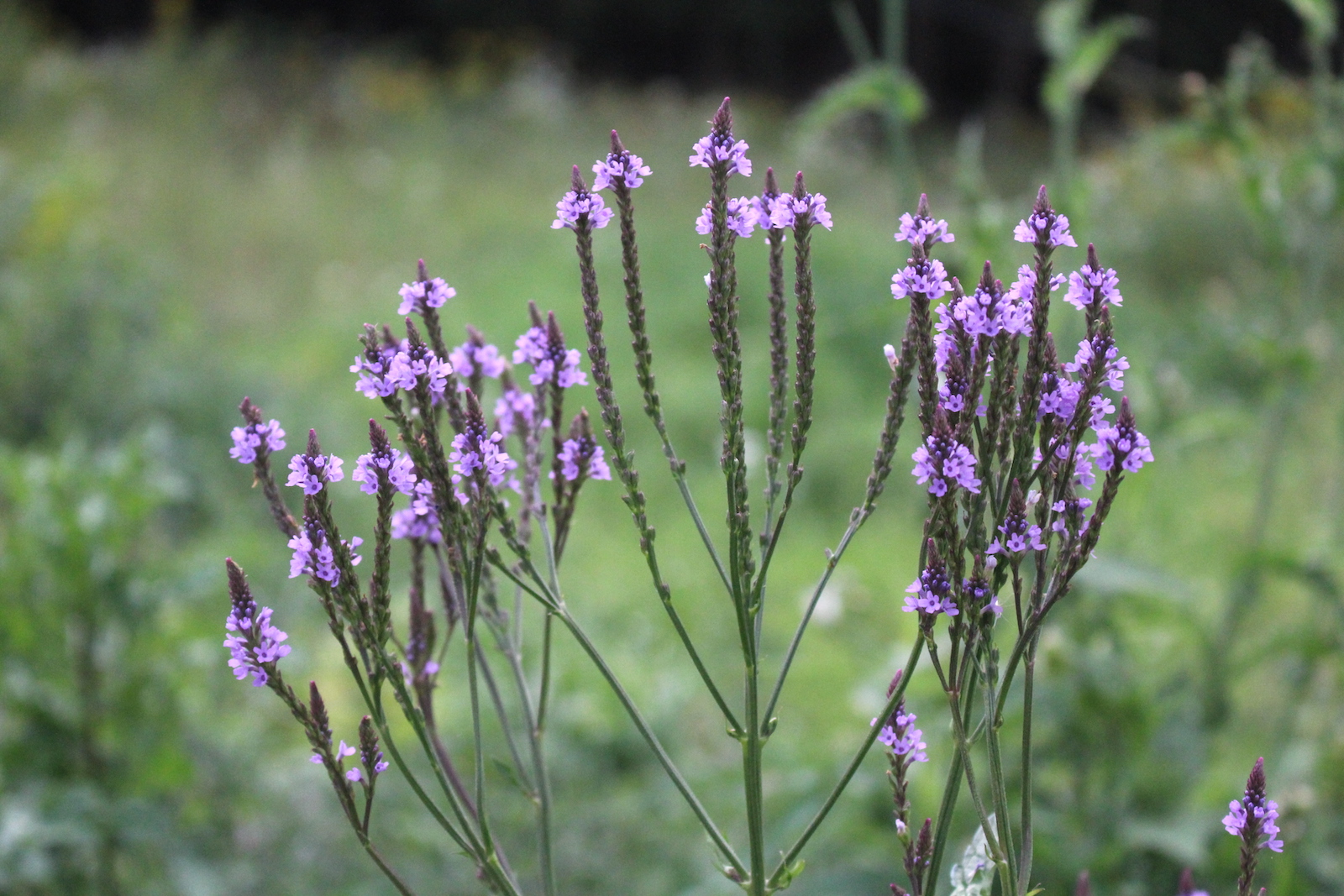
Blue vervain (Verbena hastata) is one of those wild edible weeds that it’s hard not to notice. The flower spikes are delicate, but they5 shoot up into the air with bright purple flowers that catch the eye…even though they are small.
You may wonder, “What is this weed with small purple flowers?” You’ll be surprised to find that it’s not only edible but also a highly prized medicinal plant used by cultures worldwide.
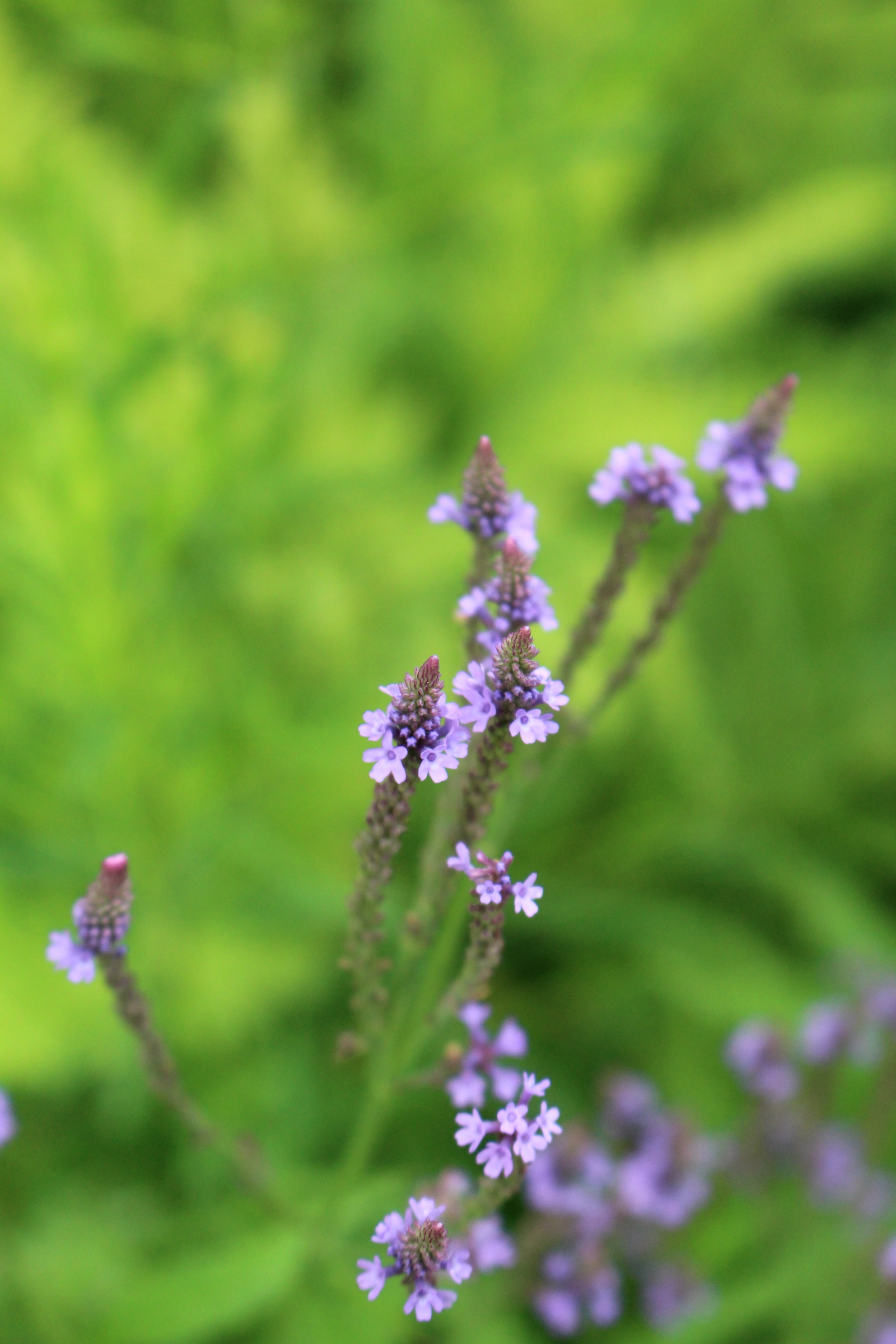
What is Blue Vervain?
Blue Vervain (Verbena hastata) is a perennial herbaceous plant native to North America. It’s known by a few common names, including American Vervain, Simpler’s Joy, Enchanter’s Plant, and Swamp Verbena.
Is Blue Vervain Edible?
Blue Vervain is edible. You can harvest and eat the roots, leaves, and seeds. You can use leaves and flowers raw and toss them into salads or cook them in teas, stews, and other dishes. Some Native American groups harvested the seeds, roasted them, and ground them into flour…making them one of the dozens of wild plants you can make into flour.
However, the plant is generally bitter tasting and is primarily used for medicinal purposes either externally or as a tea. Some folks find that soaking the seeds and leaves in multiple changes of cold water before using them improves the flavor.
Blue Vervain may interfere with blood pressure medication and hormone therapy. In extremely large quantities, Blue Vervain may also cause vomiting and diarrhea. If you have prior conditions seek advice from a physician before consuming Blue Vervain.
Blue Vervain may also stimulate the uterus and isn’t recommended during pregnancy.
Blue Vervain may grow and thrive in polluted areas. When harvesting Blue Vervain for consumption, it’s essential to find clean and unpolluted areas.
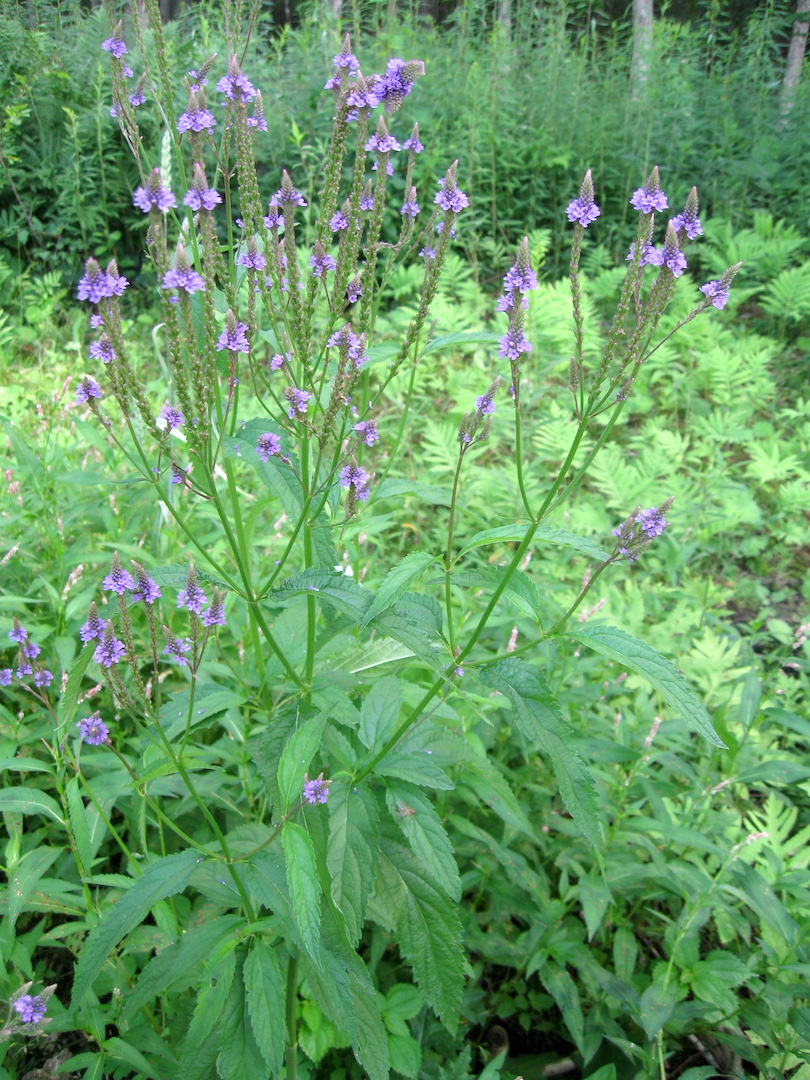
Blue Vervain Medicinal Benefits
Some Native American groups used Blue Vervain in their traditional medicine to treat various ailments. They would dry the leaves and boil them to make tea to serve as a spring tonic, soothe the nervous system, and strengthen the intestines, liver, kidneys, and lungs. They used the roots to treat headaches, stomach aches, insomnia, fevers, colds, epilepsy, and depression.
They also used Blue Vervain as an antidote to Pokeweed poisoning.
Native Americans also used Blue Vervain externally to treat wounds and sores. They also dried and powdered the flowers, then sniffed the powder to stem nosebleeds.
Modern herbalists still employ Blue Vervain today. They use Blue Vervain to treat anxiety, insomnia, and depression, balance hormones, increase milk production, and relieve pain, stress, and inflammation. Herbalists may use it to help with many conditions, including malaria, IBS, coughs, asthma, inflamed eyes, mouth sores, thyroid problems, menstrual issues, menopause, and worms. Often modern herbal practitioners will use the leaves and flowers of the plant to make a tincture or tea.
Several studies have begun evaluating Blue Vervain’s use as an herbal remedy by testing Blue Vervain leaf extract on rats. In 2010, one study found that Blue Vervain helped relieve diarrhea in rats. A similar test found that the Blue Vervain extract also had potent anti-ulcer activity in rats and another study indicated that Blue Vervain extract possesses analgesic, anti-inflammatory, and antipyretic activities.
Blue Vervain is also a key component of a traditional antimalarial remedy in Southern Nigeria. A study completed in 2010 showed that Blue Vervain possesses significant antiplasmodial activity supporting its use in the treatment of Malaria.
Hopefully, future studies will further explore the benefits of this incredible plant.
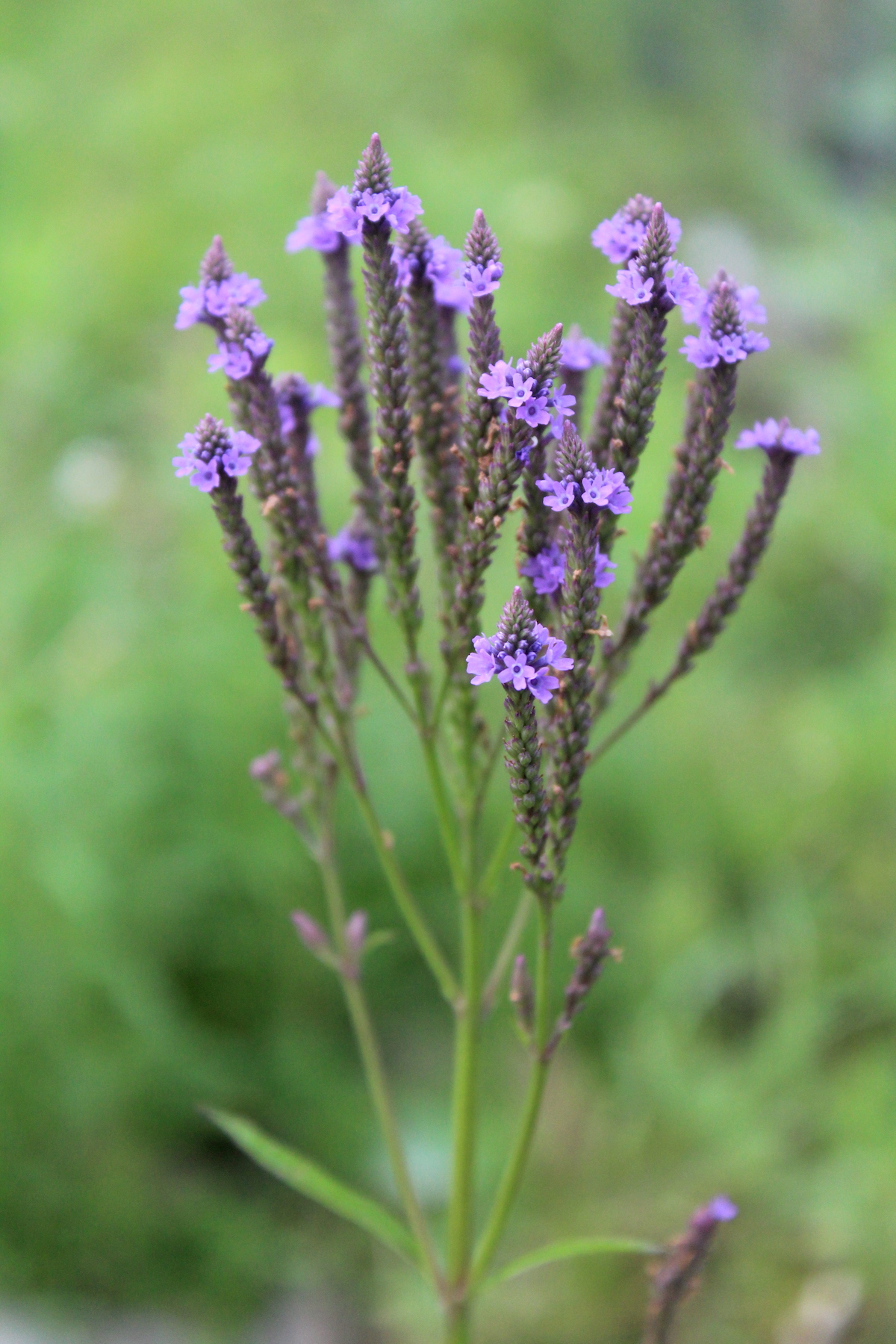
Where to Find Blue Vervain
Blue Vervain is relatively common across its native range, which includes the continental United States and parts of Canada. It has also naturalized in parts of the world with appropriate habitats, including Europe and Africa. It thrives in areas with wet soils that receive full to partial sun. Blue Vervain is tolerant of siltation, high nutrient loads, and salt.
You’ll likely find Blue Vervain in wetlands, river bottoms, streambanks, slough peripheries, wet fields, meadows, and waste areas. It will tolerate degraded and disturbed areas.
When to Find Blue Vervain
Blue Vervain is a perennial; you may find it year-round in mild climates. However, most herbalists recommend harvesting the plant when it’s flowering, typically between June and September. It is an important pollinator plant, so gather it respectfully.
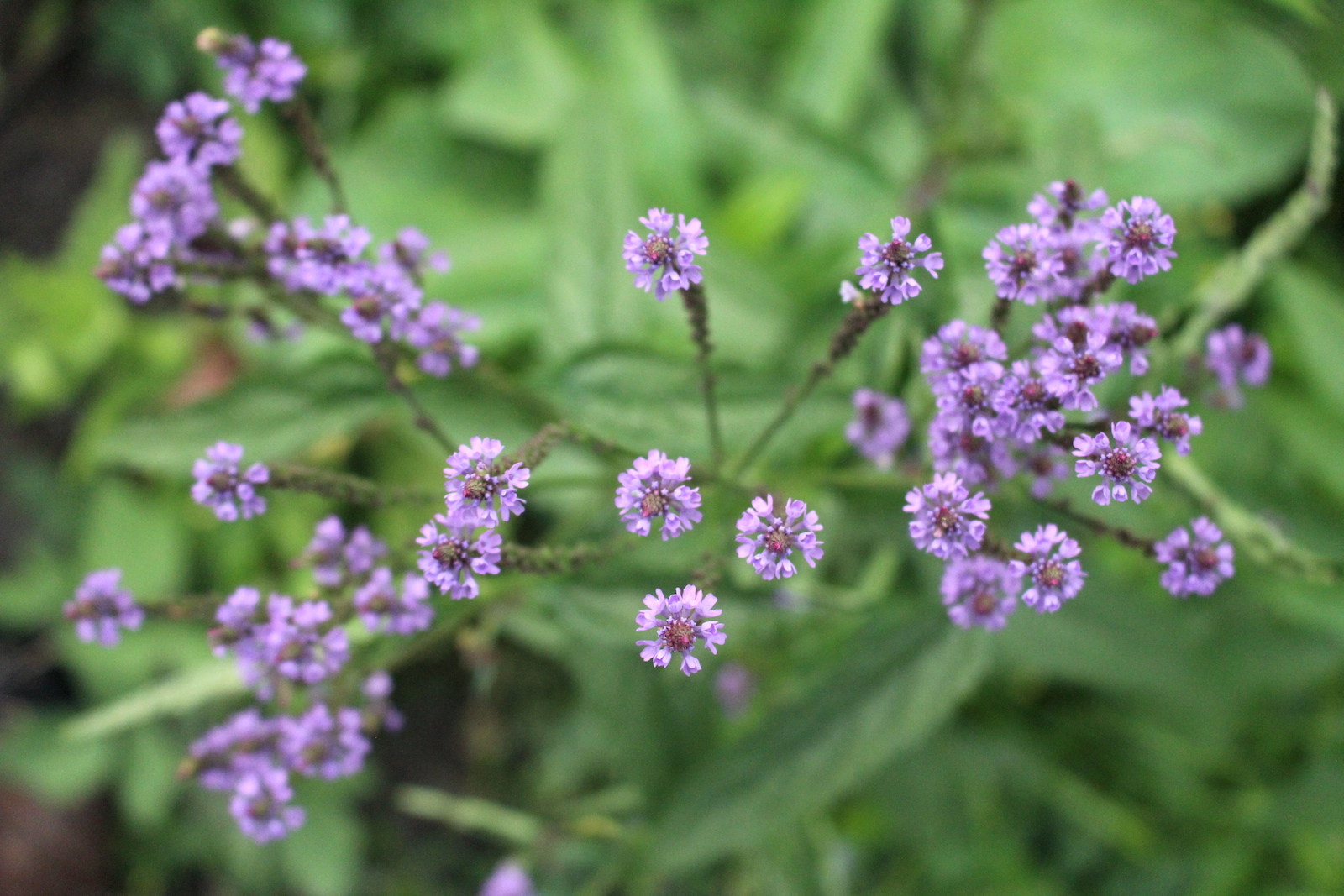
Identifying Blue Vervain
Blue Vervain is an erect growing, moisture-loving perennial that can grow up to 6 feet tall. The stems branch some and may have a spread between 1 and 2.5 feet. They can reproduce by seed or by underground rhizomes forming small colonies. It’s easiest to spot Blue Vervain when it’s in flower, producing spikes of tightly packed purple blooms.
Blue Vervain Leaves
Blue Vervain leaves are green and generally about 6 inches long and 1 inch wide. They’re oppositely arranged, spear-shaped, and toothed. Blue Vervain leaves are petioled or attached to the main stem by a small stem.
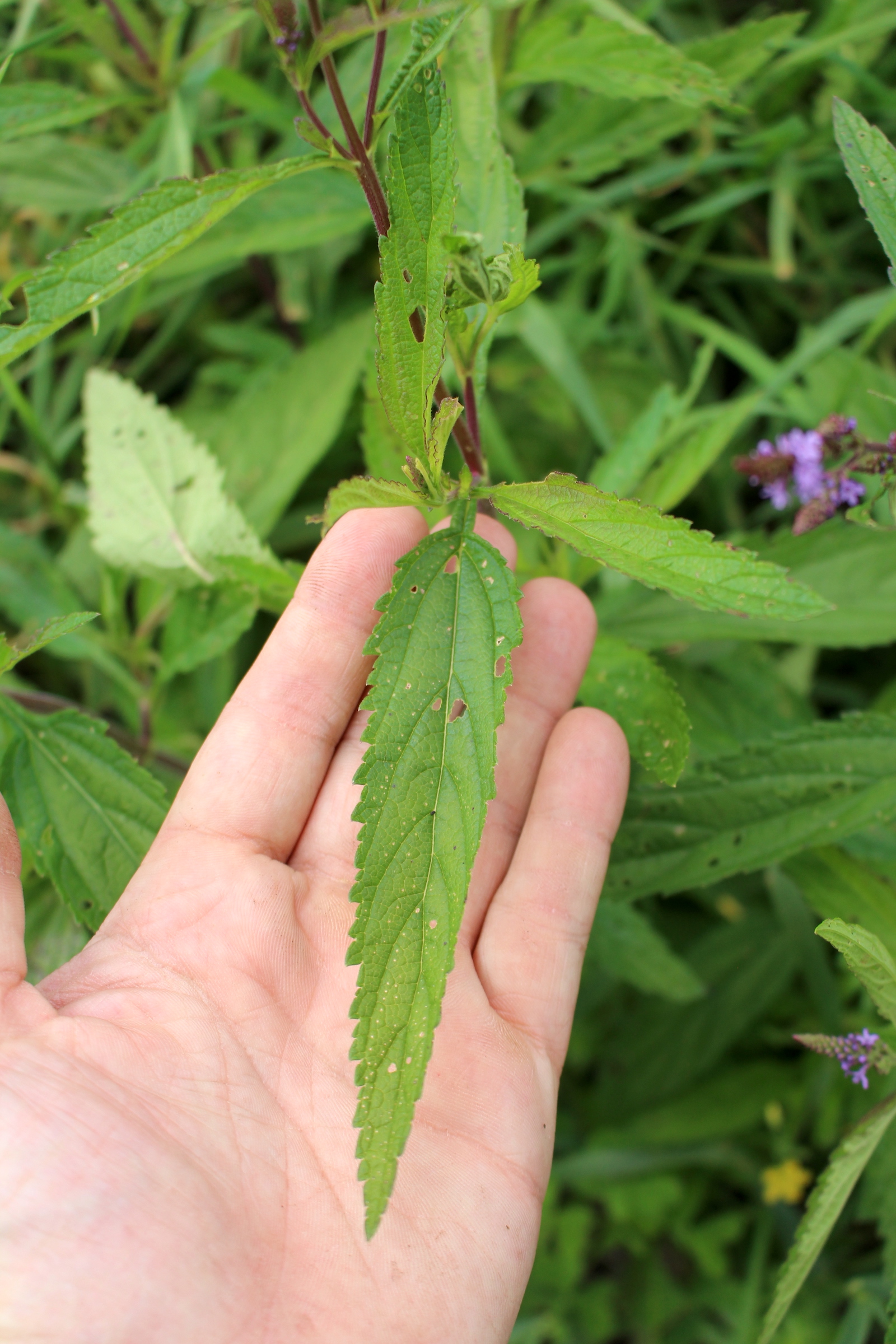
Blue Vervain Stems
Blue Vervain has red or green square stems covered in fine white hairs. They may grow up to 6 feet tall.
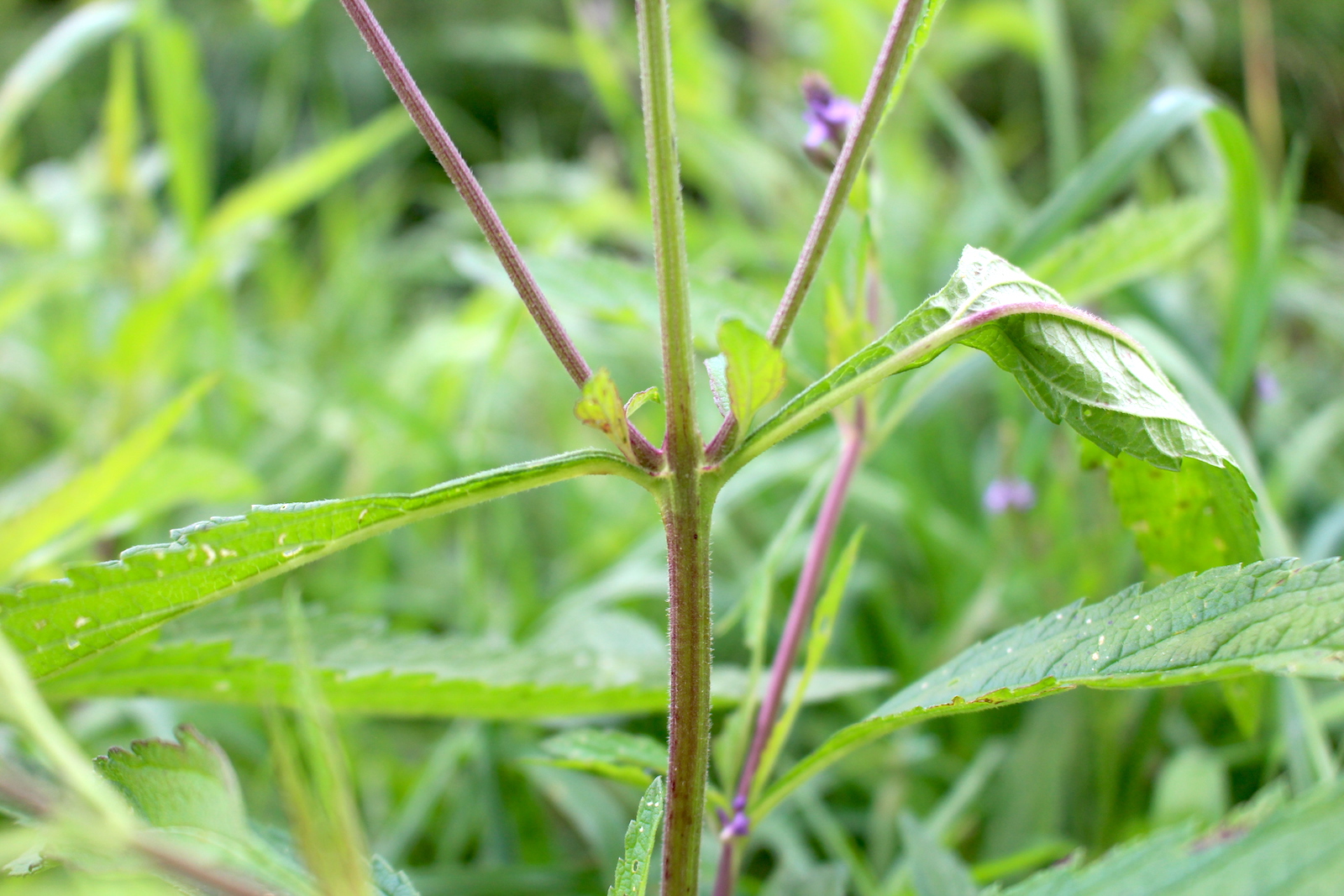
Blue Vervain Flowers
Blue Vervain flowers form on pencil-shaped spikes that protrude from the stems. These spikes are generally about 5 inches long and tightly packed with flowers.
The flowers themselves are small, five-lobed, and tubular with little fragrance. They’re generally a bluish-purple color.
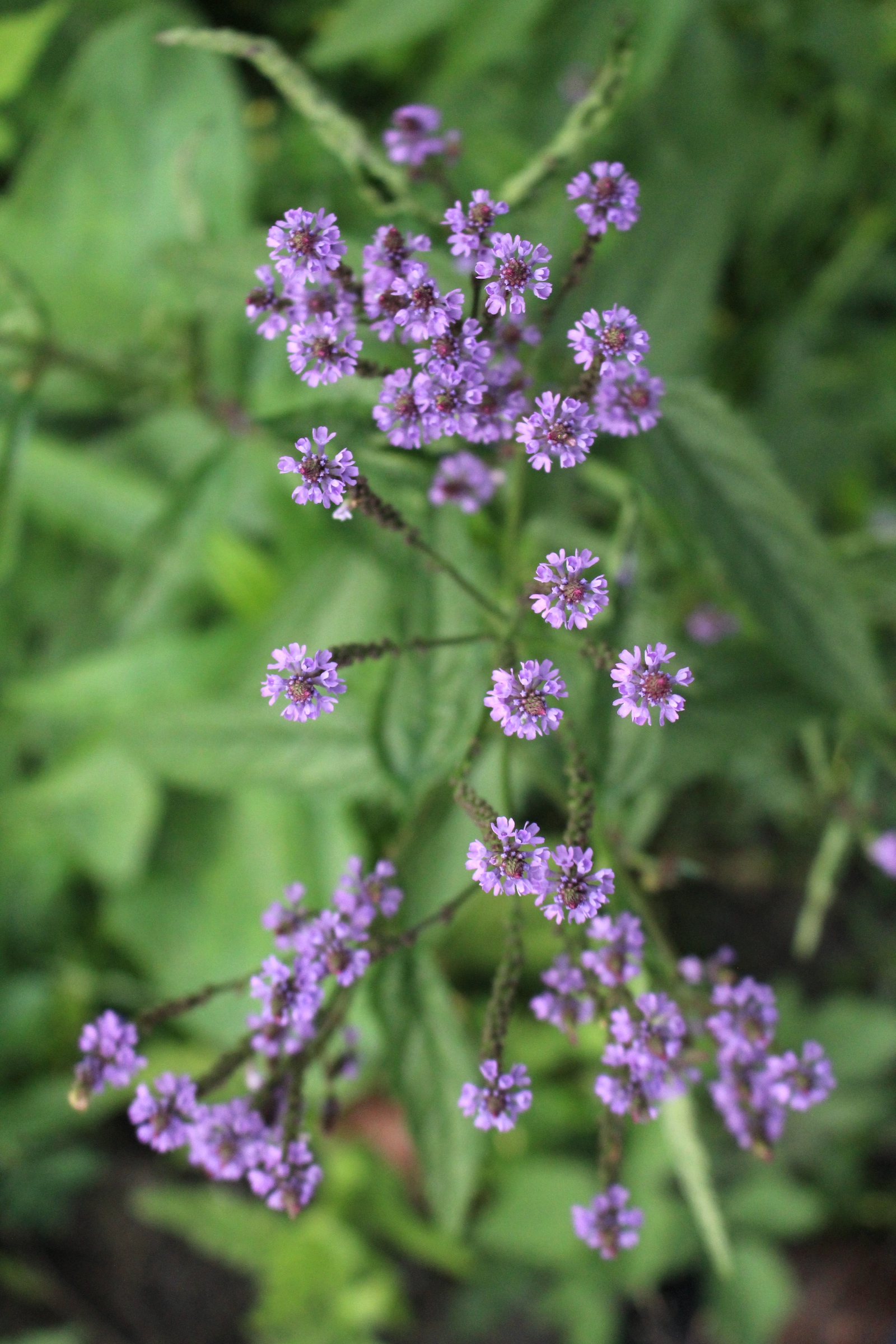
Blue Vervain Fruit
The flowers are each replaced with four reddish-brown nutlets about 2mm long and oblongoid in shape.
Blue Vervain Fruit
Blue Vervain has a fibrous, rhizomatous root system.
Blue Vervain Look-Alikes
Blue Vervain is sometimes mistaken for the related Hoary Vervain (Verbena stricta). However, Hoary Vervain differs in a few noticeable ways:
- Hoary Vervain leaves are broader, generally oval to egg-shaped, and only 2 to 3 inches long.
- Hoary Vervain leaves are sessile, meaning they’re attached directly to the stem.
- Hoary Vervain typically grows in dry habitats and doesn’t form colonies.
- Hoary Vervain has larger flowers.
Another look-a-like is the invasive Purple Loosestrife (Lythrum salicaria). You can distinguish it in the following ways:
- Purple Loosestrife leaves have smooth edges.
- Purple Loosestrife leaves are sessile, meaning they’re attached directly to the stem.
- Purple Loosestrife flowers typically have six petals and are reddish-purple.
Ways to Use Blue Vervain
Blue Vervain may not be a choice wild weed, but it is edible. You can harvest the leaves and flowers and use them raw in salads or as a garnish. You can also use them in cooked dishes like soup. These and other parts of the plant typically have a bitter flavor, so you may want to use them sparingly. The roots are also edible but are bitter, tough, and fibrous, so they’re typically used as medicine rather than food.
If you’re a dedicated forager, you harvest and roast the seeds in the late summer or fall and grind them into a meal or flour. You may want to soak them in multiple changes of water, like you would acorns, before processing. This can help remove some of their bitter flavor.
Probably the best use of Blue Vervain is in herbal medicine. You can use all parts of Blue Vervain to create teas, mouthwashes, and tinctures for internal use. You can also use the plant externally to make eyewash, washes for wounds, poultices, and more.
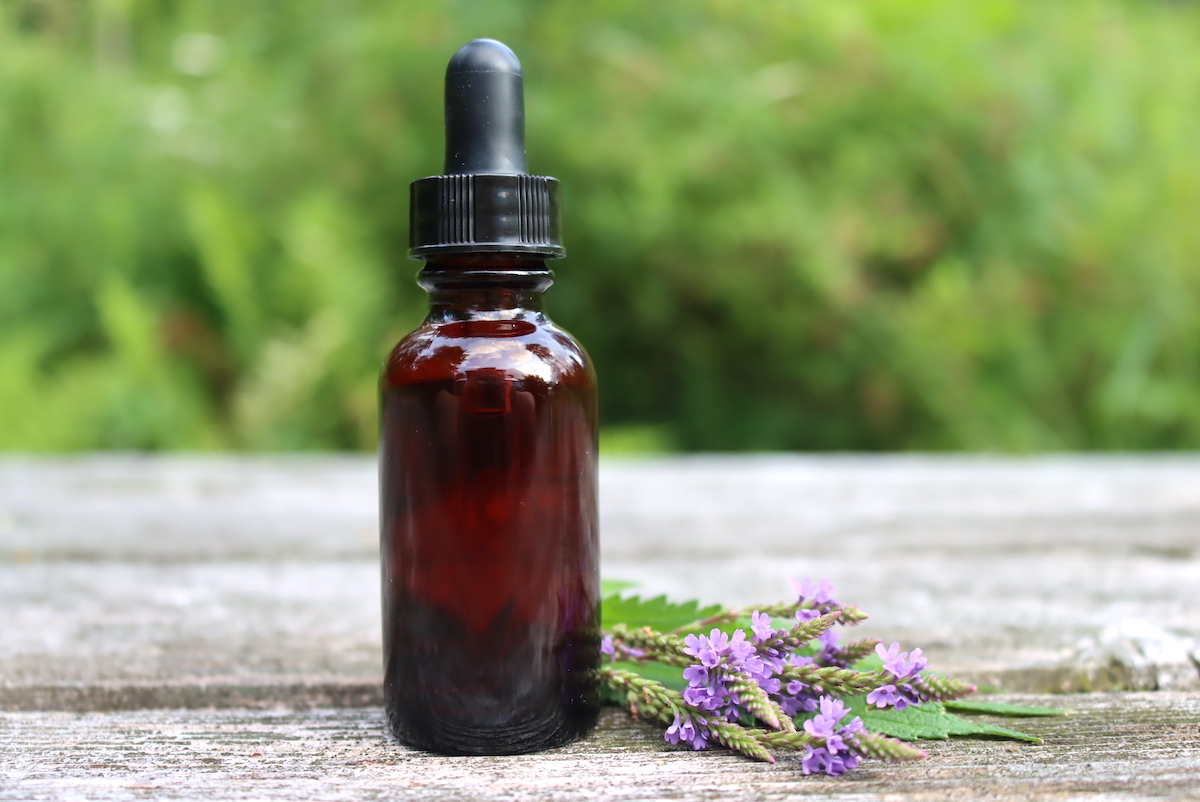
Blue Vervain Recipes
- Reap the benefits of Blue Vervain year-round with this simple 5-step Blue Vervain tincture recipe from Outdoor Apothecary.
- Use your Blue Vervain tincture to create a DIY Extract Blend for Sleep with this recipe from Mountain Rose Herbs.
- If you don’t want to create a tincture, you can use your Blue Vervain in this Calming “Sleep Rescue” herbal tea recipe from Outdoor Apothecary.
Edible Wild Weeds
Looking for other edible wild weeds?
